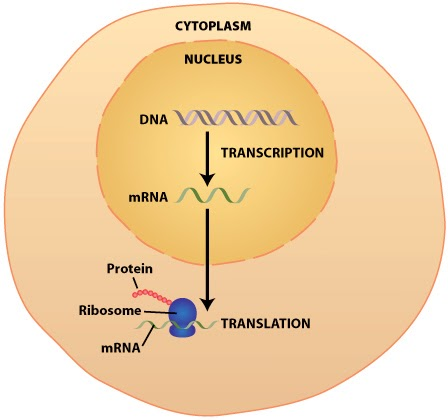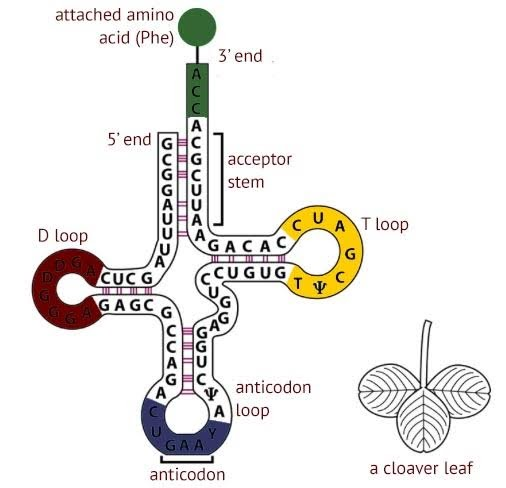
What are the three types of RNA?
Answer
510k+ views
Hint: RNA stands for RiboNucleic Acid. It is a compound found in every cell. It is majorly concerned with synthesis of proteins whereas it also plays a major role in DNA replication.
Complete answer:
RNA plays a significant role in conduction of many genetic and protein synthesising processes. Therefore, it is found in many different forms. However, out of many three types of RNA are most common. Those are:
mRNA: stands for messenger RNA (RiboNucleic Acid). It is a single stranded structure that is concerned with carrying genetic information of the replicating DNA. It carries this information in the form of some basic codes describing respective amino acid requirements in protein synthesising or DNA replicating process. As the name suggests they work as messengers between replicating DNA and protein synthesising sites in the cytoplasm.

tRNA: stands for transfer RNA (RiboNucleic Acid). It works as a helping hand for mRNA in decoding the information being carried by it. Basically, its activity can be termed as translation of mRNA data into protein synthesis. Therefore, it is specifically found in the ribosomal areas of the cytoplasm.

rRNA stands for ribosomal RNA (RiboNucleic Acid). It functions as a catalyst in protein synthesising processes. It plays a crucial role in binding of amino acids together as a single unit in order to frame several protein molecules.
Note:
RNA must not be confused with DNA. Though they are both involved in genetic processes yet are quite different in terms of structure. RNA are single stranded sugar ribose molecules whereas DNA is a double stranded oxygen lacking ribose molecule.
Complete answer:
RNA plays a significant role in conduction of many genetic and protein synthesising processes. Therefore, it is found in many different forms. However, out of many three types of RNA are most common. Those are:
mRNA: stands for messenger RNA (RiboNucleic Acid). It is a single stranded structure that is concerned with carrying genetic information of the replicating DNA. It carries this information in the form of some basic codes describing respective amino acid requirements in protein synthesising or DNA replicating process. As the name suggests they work as messengers between replicating DNA and protein synthesising sites in the cytoplasm.

tRNA: stands for transfer RNA (RiboNucleic Acid). It works as a helping hand for mRNA in decoding the information being carried by it. Basically, its activity can be termed as translation of mRNA data into protein synthesis. Therefore, it is specifically found in the ribosomal areas of the cytoplasm.

rRNA stands for ribosomal RNA (RiboNucleic Acid). It functions as a catalyst in protein synthesising processes. It plays a crucial role in binding of amino acids together as a single unit in order to frame several protein molecules.
Note:
RNA must not be confused with DNA. Though they are both involved in genetic processes yet are quite different in terms of structure. RNA are single stranded sugar ribose molecules whereas DNA is a double stranded oxygen lacking ribose molecule.
Recently Updated Pages
A man running at a speed 5 ms is viewed in the side class 12 physics CBSE

State and explain Hardy Weinbergs Principle class 12 biology CBSE

Which of the following statements is wrong a Amnion class 12 biology CBSE

Two Planoconcave lenses 1 and 2 of glass of refractive class 12 physics CBSE

The compound 2 methyl 2 butene on reaction with NaIO4 class 12 chemistry CBSE

Bacterial cell wall is made up of A Cellulose B Hemicellulose class 12 biology CBSE

Trending doubts
What are the major means of transport Explain each class 12 social science CBSE

Which are the Top 10 Largest Countries of the World?

Draw a labelled sketch of the human eye class 12 physics CBSE

Explain sex determination in humans with line diag class 12 biology CBSE

Give 10 examples of unisexual and bisexual flowers

State the principle of an ac generator and explain class 12 physics CBSE




